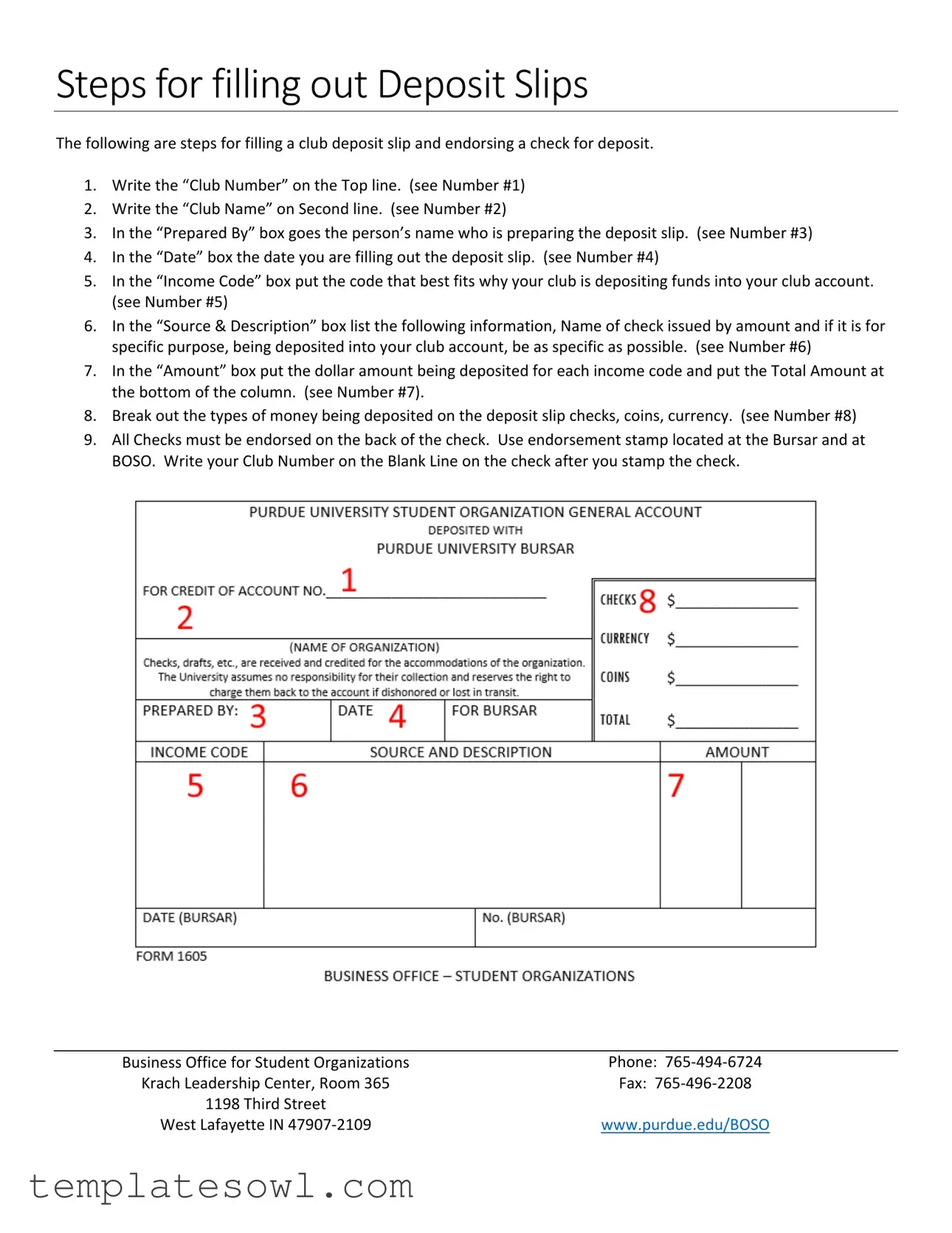What is a Deposit Slip?
A Deposit Slip is a form used to record the details of money being deposited into a bank account. It outlines the source of the income and provides essential information necessary for accurate accounting and record-keeping.
How do I fill out a Deposit Slip?
To fill out a Deposit Slip, begin by writing your club number at the top. Next, include your club name on the second line. The "Prepared By" section should contain the name of the individual who is handling the deposit. Be sure to write the date in the designated box as well. In the "Income Code" box, enter the code that accurately describes why funds are being deposited. Then, in the "Source & Description" area, list details about the checks, specifically the names, amounts, and their purposes. Finally, be careful to include the amount being deposited next to each income code and calculate the total amount at the bottom of the column. It’s also important to categorize the types of money being deposited—checks, coins, and currency.
What should I include in the “Source & Description” box?
This box should contain detailed information regarding the checks being deposited. You should specify the name of each check issuer along with the amount and the purpose of each deposit. The more specific you can be, the easier it will be for anyone reviewing the slip to understand where the funds are coming from and why.
Is it necessary to endorse checks before depositing them?
Yes, it is essential to endorse every check before depositing. This guarantees that the funds can be processed and credited to your account without any issues. You can use the endorsement stamp located at the Bursar and at the Business Office for Student Organizations (BOSO) for this purpose.
Where should I write my Club Number on the check?
After stamping the back of the check with the endorsement stamp, you should write your Club Number on the blank line provided. This step helps to ensure that funds are accurately attributed to your specific club account.
What if I need help filling out the Deposit Slip?
If you encounter any issues or have questions while filling out your Deposit Slip, you can reach out for assistance at the Business Office for Student Organizations. Their phone number is 765-494-6724, and they are located at the Krach Leadership Center, Room 365.
Can I submit multiple deposits on one Deposit Slip?
It is generally advisable to submit only one deposit per Deposit Slip to maintain clarity in record-keeping. If you have multiple sources of income or checks to deposit, consider using separate slips for each source, as this will ultimately simplify the accounting process.
What should I do if I make a mistake on the Deposit Slip?
If you make an error while filling out the Deposit Slip, it is best to start over with a new form to avoid any confusion. Crossed-out information can lead to misinterpretations. Always double-check details before submitting the slip.

